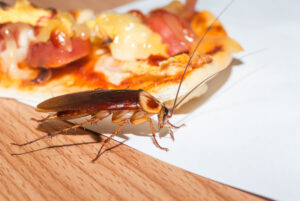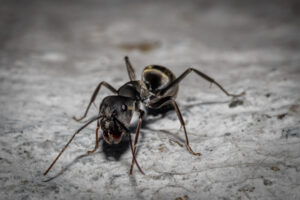With the holidays upon us and nights getting longer and colder, mice are starting to sneak into our houses, looking for readily available food and comfortable shelter.
Over the millennia, mice adapted to living close to humans, using our presence to drive off their natural predators and subsisting almost entirely on human food. Unfortunately, for their human hosts, sharing a house with mice comes with the short end of a bad deal.
Mice, like all rodents, have front teeth that grow continuously, forcing them to gnaw on walls, furniture, and books to keep them short. Mice chewing on house wire is one of the most common causes of house fires and power outages.
They have an incredible sense of smell and can sense stored food through multiple house walls and closed doors. They will squeeze through an opening the size of a nickel, run up a vertical wall, or chew through the plywood and drywall the wall is built out of to get to their prize.
Mice are communal rodents; if you see a single mouse, there is a good chance that a whole nest is close by.
Watch for the following signs of a mouse infestation in your home:
- Gnaw marks on walls and furniture
- Mouse droppings, rod-shaped and pointed on the ends
- Oily rub marks on the walls
- Mouse tracks
- The odor of mouse urine
Today we will take a look at what mice look like, the diseases mice carry, how to get rid of mice, and, if that fails, how to find reliable pest control in your area.
What Do Mice Look Like?
There are various species of mice, but in Marlborough, the likely culprit you’ll deal with is the house mouse, the most widespread mouse species in the United States.
The house mouse is a small rodent, averaging 2 1/2 to 3 3/4 inches in length, not including the tail, with grey fur and cream-colored undersides. They have round bodies with large ears and pointed muzzles.
House mice can have up to six litters yearly, with 10 to 12 pups in each litter, allowing them to grow the colony in your home faster than any other rodent.
The Dangerous Diseases Mice Are Known To Spread
Mice carry a number of infectious diseases that are easily transferable to humans. Among them are:
- Leptospirosis
- Lymphocytic choriomeningitis (LCM)
- Tularemia
- Salmonellosis
Exposure to mouse saliva and feces can also trigger asthma attacks and allergic reactions. Ticks and fleas that infest mice bring another set of diseases into your house.
How Exterminators Get Rid Of Mice
Dealing with a mouse infestation is rarely a job most DIYers have the tools and experience to handle. Professional pest control technicians who employ numerous mouse control approaches, depending on a specific situation, are always your best bet.
A quality technician will identify and seal the holes mice use to enter your house. They can place traps in the out-of-the-way parts of the house along mouse pathways, use tracking powder to find a nest, and employ pesticides, such as Rodenticide, to deal with the whole colony at once. One round is rarely enough to get rid of all the mice in the house, and a few follow-up visits are usually necessary.
How Do I Get Rid Of Mice In My Home For Good?
At Bug Bully Pest Control, we have been solving pest control issues and mouse problems for Marlborough residents for over a decade. We specialize in treatments tailored to your specific situations and use products that are safe for you, your children, and your pets.
If you’ve seen signs of a mouse infestation in your home, give us a call today to schedule a free inspection!








